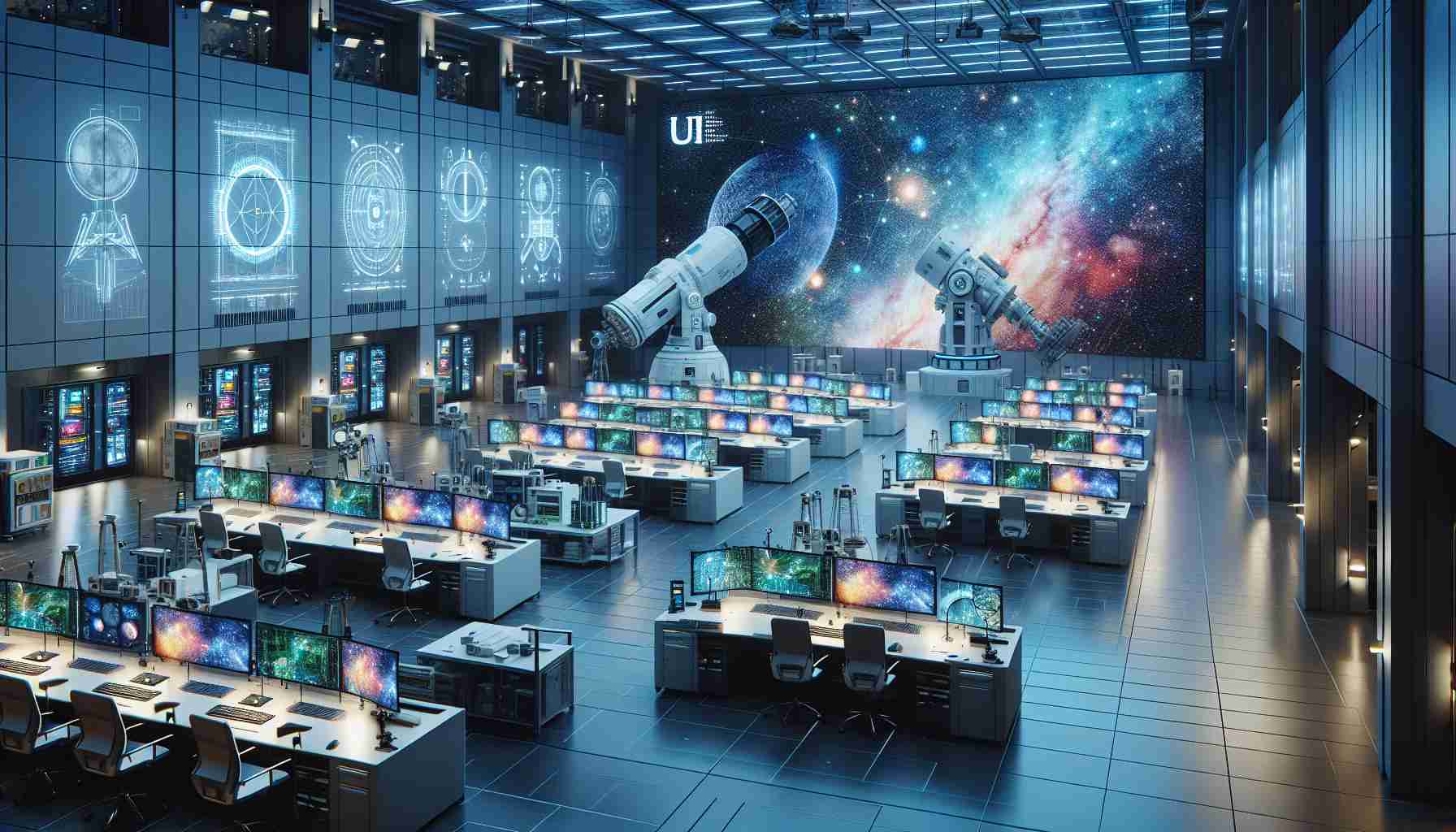
GRAND FORKS – The University of North Dakota has inaugurated a state-of-the-art laboratory dedicated to advancing satellite technology. On Monday, a ceremony marked the official opening of the “National Security Corridor” located in Harrington Hall, aimed at enhancing the educational experience for students interested in aerospace technologies. This initiative aims to strengthen the university’s connections with military and defense sectors focused on space exploration.
The new facility boasts specialized areas for the design and construction of satellites and their essential components. Among its notable features is a digital engineering lab equipped with advanced modeling software to analyze the aerodynamic properties of spacecraft. Furthermore, a state-of-the-art nanofoundry will facilitate the development of innovative materials for satellite creation and emerging fields such as quantum computing.
The university’s President emphasized that facilities of this nature not only engage students but also inspire them to pursue careers in this growing field. The corridor aligns with the preliminary groundwork laid down after the establishment of the Space Force in 2019, responding to escalating military interests in space.
State officials expressed strong support for the initiative, acknowledging the need for North Dakota to contribute significantly to national defense capabilities. By investing $14 million during the 2021 legislative session, lawmakers underscored their commitment to harnessing the university’s potential in addressing military research and development challenges.
As projects tied to national security grow, this corridor is expected to cultivate a skilled workforce ready to meet the demands of the defense industry.
UND Launches Advanced Laboratory for Satellite Research: A New Era in Aerospace Education
The University of North Dakota (UND) has recently inaugurated an innovative laboratory dedicated to satellite research, marking a significant step forward for aerospace education in the region. Located within Harrington Hall, the newly established “National Security Corridor” is poised to enhance not only the academic landscape but also the practical applications of aerospace technologies in military and civilian sectors.
What Are the Key Features of the New Laboratory?
The National Security Corridor encompasses cutting-edge facilities designed specifically for the research and development of satellite technology. Its architecture includes areas focused on satellite design, construction, and testing, alongside a specialized digital engineering lab. This lab employs high-level modeling software, enabling students and researchers to simulate and analyze the aerodynamic properties of aerospace vehicles. Additionally, the incorporation of a nanofoundry allows for the experimentation and production of advanced materials essential for next-generation satellite systems and quantum computing applications.
Why is This Initiative Significant?
The initiative is a response to the expanding needs of the military and defense sectors, particularly following the establishment of the United States Space Force in 2019. With increasing reliance on satellite technology for national security, there is a pressing demand for a highly skilled workforce capable of navigating the complexities of space technologies. By aligning educational resources with these emerging demands, UND is strategically positioning itself as a leader in aerospace research and development.
What Are the Main Advantages of this Laboratory?
1. Career Development: The new laboratory provides students with hands-on experience and exposure to cutting-edge technology, significantly enhancing their career prospects in the aerospace and defense industries.
2. Research Opportunities: The facility facilitates collaboration between faculty, students, and industry partners, encouraging innovative research projects that can lead to practical applications in satellite technology.
3. Economic Growth: By fostering a skilled workforce specialized in satellite technology, North Dakota can play a crucial role in the national defense economy, attracting businesses and defense contracts to the region.
What Challenges and Controversies May Arise?
1. Funding and Resources: Sustaining the laboratory’s operations and ensuring its continuous upgrade may present financial challenges. Dependence on state funding and partnerships with private industries could affect long-term viability.
2. Ethics of Military Research: The collaboration between academic institutions and the military often raises ethical questions regarding the application of research findings. Balancing educational goals with national defense objectives remains a contentious topic.
3. Regulatory and Compliance Issues: As technology advances, compliance with national security regulations and export controls will be crucial, posing a barrier to some research initiatives or collaborations.
In Conclusion
The unveiling of the National Security Corridor at the University of North Dakota represents a vital development in the realm of aerospace education and national defense. As the demand for satellite technology continues to grow, this laboratory not only supports academic learning but also fortifies the region’s contribution to national security. By addressing both the advantages and challenges associated with such initiatives, UND is strategically positioned to lead the way in shaping the future of satellite research and aerospace technology in the United States.
For more information about the University of North Dakota and its programs, you can visit UND’s official website.



